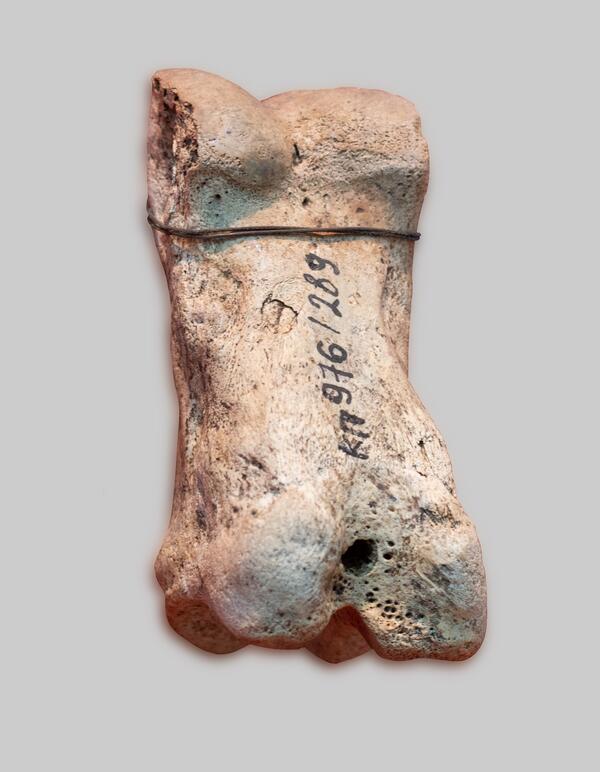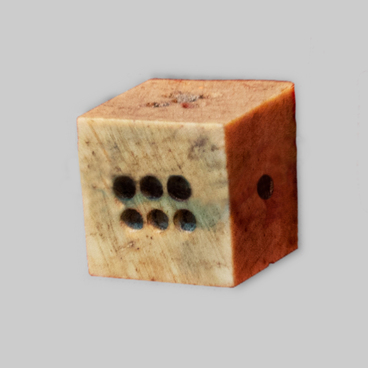Little is known about the game culture of the Russian Siberian towns of XVII–XVIII centuries from the historical literature. More information is provided by the artefacts discovered during excavations of the ancient Russian towns: Mangazeya, Tobolsk, Tyumen, Tomsk, Kuznetsk. Archaeological studies of those ancient Siberian towns helped gather very rich collections that allow understanding of many aspects of the military and domestic life of their residents.
Among the excavation findings in the museum collections, individual artefacts may be discovered that are connected with various games and entertainments. The XVII century is known as the time when individuals became aware of their important role in the destiny of the country and at the same time, the departure of everyday life, social and individual conscience from the clerical tradition began.
Foreigners evidence that the games that were popular in Russia in those times were competitive, logical, entertaining and amusing, and risky. Most frequently found game accessories among the artefacts discovered in the Siberian towns are the so called ‘bones’. They were made of the hoof bone of a pig or cow, more seldom of a horse. Average ‘bone’ size: height — ca.4,5 cm, width and thickness — up to 2-3 cm. The ‘bones’ are very strong, and dozens of those are discovered in the cultural layer in a good state of preservation.
There exist several kinds of ‘bones’, each of them used in the game in one or another capacity - The first kind is the ‘bone’ with no enhancements, the second is the ‘bone’ with the owner’s marks, spots or cuts through, and the third kind is a the “bone” weighted with lead or tin, with a knocked-in iron nail.
The bones that are not weighted are put “at stake”, the weighted “bones” were used as a bat. Each player participated in the game with his own “bones” and a bat. In the game he could either lose his stock or replenish it. The “bones”, and especially bats, could sometimes be traded. People mainly played not for gain but just for the fun of it. It can be proved by the fact that the players competed one on one and also, in teams: each player had his own bat and common “bones”.
The course of the game was as follows: the bones were put in a row in a certain place, their number was agreed in advance. The number of bones of each player was equal, both in a game of individuals and in a team game. The bones put in pairs were called “nest”, and all nests were called “stake”. Each player aimed at beating a nest (or even two nests) at a single stroke. The distance to throw the bat from was also agreed upon in advance. Usually it was 7-8 m. Those who knocked half of the bones out moved to the next battle line, 2-3 m ahead.
In order to decide the sequence of throwing bats at the bones, all players threw their bats from the same place in the same direction and the one that went the furthest, got the right to begin. The rest were prioritized depending on the distance of their throws.
During the game each player had the right to one throw. The bones knocked out of the “stake” were deemed won – so many as you knock out. If the player missed, it meant that he lost the bones put on stake. When all bones on the stake were knocked out, the gains and losses were calculated. For a new game a new row of bones were put, again an equal number from everybody. If a player did not have a required number of bones, he left the game and was declared bankrupt. The game continued until somebody accumulated all bones in his pocket if it was a game of individuals, or in a common pool if it was a team game.
Bones are most frequently discovered game accessories from Kuznertsk excavations. There exist other names for the game: “lodygy”, “plotska”, “zhog”, “gorodok”. An important accessory of that game were the bats – perforated bones filled up with lead. Sometimes, an iron nail was knocked into the bone, instead of lead. A museum artefact is a cow “bone” made of ancklebone. A blind 0,65 cm hole is perforated in it, two chips and two parallel cuts can be seen on its surface, probably, a mark. The artefact was found in one of the houses in Kuznetsky osrtrog.
Among the excavation findings in the museum collections, individual artefacts may be discovered that are connected with various games and entertainments. The XVII century is known as the time when individuals became aware of their important role in the destiny of the country and at the same time, the departure of everyday life, social and individual conscience from the clerical tradition began.
Foreigners evidence that the games that were popular in Russia in those times were competitive, logical, entertaining and amusing, and risky. Most frequently found game accessories among the artefacts discovered in the Siberian towns are the so called ‘bones’. They were made of the hoof bone of a pig or cow, more seldom of a horse. Average ‘bone’ size: height — ca.4,5 cm, width and thickness — up to 2-3 cm. The ‘bones’ are very strong, and dozens of those are discovered in the cultural layer in a good state of preservation.
There exist several kinds of ‘bones’, each of them used in the game in one or another capacity - The first kind is the ‘bone’ with no enhancements, the second is the ‘bone’ with the owner’s marks, spots or cuts through, and the third kind is a the “bone” weighted with lead or tin, with a knocked-in iron nail.
The bones that are not weighted are put “at stake”, the weighted “bones” were used as a bat. Each player participated in the game with his own “bones” and a bat. In the game he could either lose his stock or replenish it. The “bones”, and especially bats, could sometimes be traded. People mainly played not for gain but just for the fun of it. It can be proved by the fact that the players competed one on one and also, in teams: each player had his own bat and common “bones”.
The course of the game was as follows: the bones were put in a row in a certain place, their number was agreed in advance. The number of bones of each player was equal, both in a game of individuals and in a team game. The bones put in pairs were called “nest”, and all nests were called “stake”. Each player aimed at beating a nest (or even two nests) at a single stroke. The distance to throw the bat from was also agreed upon in advance. Usually it was 7-8 m. Those who knocked half of the bones out moved to the next battle line, 2-3 m ahead.
In order to decide the sequence of throwing bats at the bones, all players threw their bats from the same place in the same direction and the one that went the furthest, got the right to begin. The rest were prioritized depending on the distance of their throws.
During the game each player had the right to one throw. The bones knocked out of the “stake” were deemed won – so many as you knock out. If the player missed, it meant that he lost the bones put on stake. When all bones on the stake were knocked out, the gains and losses were calculated. For a new game a new row of bones were put, again an equal number from everybody. If a player did not have a required number of bones, he left the game and was declared bankrupt. The game continued until somebody accumulated all bones in his pocket if it was a game of individuals, or in a common pool if it was a team game.
Bones are most frequently discovered game accessories from Kuznertsk excavations. There exist other names for the game: “lodygy”, “plotska”, “zhog”, “gorodok”. An important accessory of that game were the bats – perforated bones filled up with lead. Sometimes, an iron nail was knocked into the bone, instead of lead. A museum artefact is a cow “bone” made of ancklebone. A blind 0,65 cm hole is perforated in it, two chips and two parallel cuts can be seen on its surface, probably, a mark. The artefact was found in one of the houses in Kuznetsky osrtrog.



